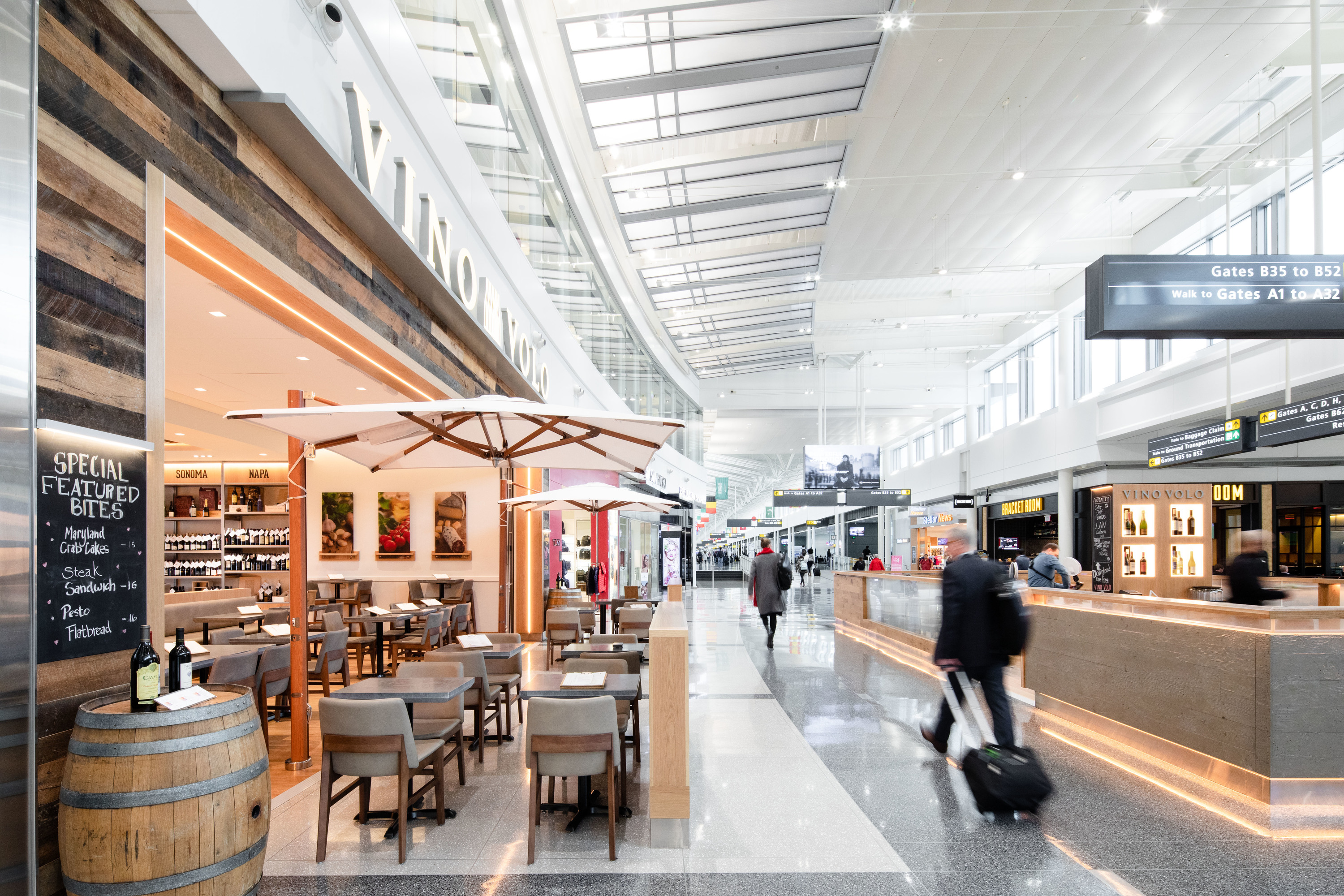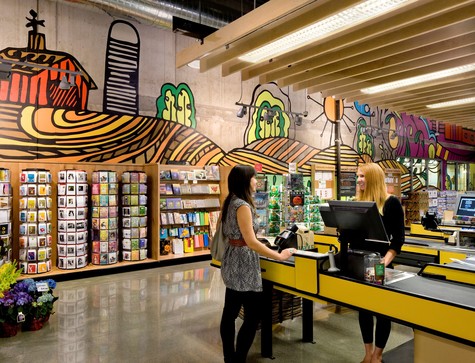
Dining at the airport used to be the stuff of late-night TV jokes and fast-food nightmares. But tightened security check-points combined with increased travel overall have transformed concourse food and beverage venues into destinations in their own right. Today’s top airports have had a revelation: the average traveler has free time in the airport post-security — over 45 minutes, according to NPD Group’s market research. That results in a captive audience with nothing much to do other than eat, drink, and shop.
The design of airport shopping and dining venues comes with a particular set of challenges related to their unusual locale. Located in cramped storefronts (“in-line”) or marooned as islands in a terminal hold room (standalone), airport restaurants and shops must attract visitors who are stressed by travel, loaded with luggage, and frequently suffering from decision fatigue. They must prepare to be open long hours, work around limited storage, and adhere to strict security when it comes to locking down equipment and taking deliveries.
While retail owners want their shop design to embody their brand and attract customers, they must also meet the airport’s design criteria and discourage “gate potatoes,” who occupy seats while waiting for their flight, sometimes without ordering. Retailers frequently work with “concessionaires,” management companies that lease airport storefronts, who may have design requirements of their own.
Coordinating these different needs is the job of the architect, working closely with the client's operations team. Field Paoli has helped Vino Volo, a Napa-inspired restaurant, wine bar, and wine merchant address unique challenges at multiple airport locations. Here are some of our lessons learned:
VISIBILITY
First impressions really matter to decision-fatigued passengers. Mapping a traveler’s journey through the concourse allows designers to determine the prime approach view for a storefront. Passengers should be able to see the storefront’s sign, or a sandwich board, maybe even people sitting at the bar, from various viewpoints. Since some passengers tend to stop for food on the way to their gate, while others prefer to go to their gate first and then return for food, it’s important to consider alternate approaches.
LUGGAGE
Airport passengers come with baggage, literally. Retail design must consider that every passenger will be trailing a bulky suitcase or backpack. Leaving aisle room and space at tables for luggage storage is key.
LOCALIZATION
Today’s airports seek to create a connection to the surrounding geographic region. When Vino Volo went into New Orleans International Airport, they were asked, “What about your concept is New Orleans?” From a retail standpoint, Vino Volo oriented the food and beverage offerings to include regional inspiration. To incorporate architectural touchpoints, Field Paoli chose finishes that included a local limestone and a variation on a local wood species.
SECURITY
Since the concourse is open 24/7, airports require storefronts to be completely lockable when closed. This is simply solved with a roll-down grill for in-line locations, but what about standalone stores? Field Paoli has designed a standalone market at Minneapolis-St. Paul International Airport that only has one back wall and is underneath a ceiling that doesn’t allow for a track. To make everything lockable, we designed special covers for every fixture containing merchandise within the store.
STORAGE
Airport retail locations come with limited accessibility for storage or commissary type spaces. This, combined with the security challenges in receiving deliveries, must be considered when it comes to store design. The challenge is to design enough storage space to maintain stock and cut down on daily deliveries, while optimizing retail floorspace. One option is to lease separate storage space that is located post-security but not necessarily part of the store’s footprint.
THE FUTURE
Here’s the final challenge with airport retail: like traditional retail, it is subject to rapid change. Already, technology such as vending machines with high-end merchandise is introducing new competition to the airport retail scene. Airport food and beverage venues are starting to offer more mobile ordering, or in-store iPad ordering.
In the future, the travel experience will change dramatically, including how passengers get to and move through the airport. Future travelers may book a trip online, schedule a self-driving and self-parking car for pick-up, and use face recognition to breeze through security and right onto the plane. In that scenario, you might not have to be at the airport as early as we do now, eliminating the concept of a captive retail audience. That could mean that store design will need to stand out and be a destination even more so than it does today.
On the other hand, as more airports allow non-passengers to go through security, airports may just blossom into dining and entertainment districts for everyone. The deciding factor will be how well designed these spaces are, and how they enhance the kind of experience we all seek: authentic connection.


